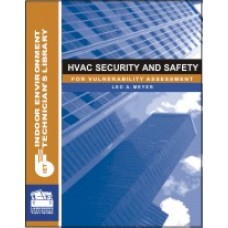Summer weather drives a lot of business for HVAC contractors. What does this summer hold? Weather forecasters say to expect a somewhat cooler season, but there will be plenty of hot days across the country to drive demand.
In fact, hotter weather is the new normal. The National Oceanic and Atmospheric Administration recently revised its 30-year average for U.S. climate normals. The average temperature rose to 53.3° F in 1991-2020 from 52.8° F in 1981-2010. This seems like a small change, but it means this was the warmest period on record for the country.
It has also been a very dry spring. Nearly half of the country — stretching from the Pacific Coast to the Great Plains and upper Midwest — is currently experiencing moderate to exceptional drought conditions, NOAA reports. Summer should be a little wetter, although dry conditions will remain in many parts of the country.
Northeast
According to AccuWeather, early summer storms will keep the really hot weather at bay in the Northeast. By August, it will be a different story. All of the major Northeast summers are predicted to see the same number of days over 90° as last year. Temperatures may be around 1° to 3° above normal this summer across the Northeast. Washington, D.C., is expected to have an especially hot summer.
Great Lakes
The story here won’t be the heat but the humidity, said Paul Pastelok, leader of the long-range forecasting team at AccuWeather. It’s been a dry spring, with drought conditions in several areas, but those early summer storm systems should take care of that, at least until August.
There may be fewer warm days in the region, but those days will drive precipitation into the air, which leads to muggy nights. The Great Lakes are some of the largest inland bodies of water in the world. That means that when the temperatures rise, a lot of moisture enters the atmosphere, just as it does in the Southeast. Consumers could see an increased interest in dehumidification products.
North Central
Key weather factors for the United States are the Pacific pressure systems known as El Nino and La Niña, said Richard B. Rood, a professor of climate and space sciences and engineering at the University of Michigan. The La Niña phase just ended, and the systems are currently neutral. The North Central region will feel the biggest impact of this shift, Rood said. These states usually warm up following a La Niña.
Midsouth
This looks to be the relatively calm part of the country this year. Forecasts look to warm temperatures, although nothing out of the ordinary. There will also be plenty of rain early in the summer, although not as much as in the Great Lakes region, according to AccuWeather.
Southeast
Heat is a given in this part of the country. The biggest weather concern is always storms. Last year saw a record Atlantic tropical storm season, with 30 named storms, 12 of which reached the U.S. shore. Forecasters at Colorado State University’s Department of Atmospheric Sciences expect fewer storms this year, but still above average with 17 named storms.
The first of these storms arrived early when a post-tropical storm named Ana formed off the coast of Bermuda in late May. Rood said the U.S. may see a longer storm season, if not necessarily a more active one.
Mountain West
Rood sees a biggest issue on the other coast. Wildfire season is in full swing out West and is expected to get worse. More than 87% of the West is now in drought, with over half the West in the highest two categories of drought, according to the National Significant Wildland Fire Potential Outlook. Snowpack set new record lows in parts of the West.
“You’re seeing the potential extension of hurricane season, but you’re seeing the definitive extension of fire season in California, Washington, and, to some extent, the general Mountain West,” Rood said.
More wildfires mean more particulates in the air. That means more interest in IAQ. A study by Berkeley Lab’s Indoor Environment Group recommends schools and office buildings install at least MERV 13 filters and reduce ventilation during wildfires.
Southwest
The Southwest has also been dry for more than a year. It may seem hard to believe that a desert region is home to a monsoon cycle, but it is. The North American Monsoon was very weak last year. Las Vegas went most of the year without any measurable rainfall, AccuWeather reports. This year, the forecasting firm expects the monsoon to become more active, starting in the middle of the summer. It may fall short of eliminating all drought conditions in the area, Pastelok said.
HVAC Contractors Change Thinking on Extreme Weather
HVAC contractor Lance Beck, owner of AirOne Heating and Air Conditioning Repair in San Marcos, Texas, recently appeared on a local news broadcast to discuss the best way for consumers to protect their HVAC systems during lightning storms. He felt the need to share this message with the public because his firm gets numerous calls about burnt out units after these storms. And their frequency seems on the rise, Beck said.
Texas residents have always had to deal with lightning. What they were unprepared for was February’s winter storm. It crippled large parts of the state. Beck said his firm lost a week of business.
“We never experienced anything like that,” he said.
Weather patterns are changing, mostly due to rising temperatures. The concept of a winter storm brought on by warmer weather may seem odd, but U-M professor Rood said that it’s a concept HVAC contractors will easily understand. As the climate warms, precipitation enters the atmosphere as a gas. When that warm gas reaches the coolest parts of the upper atmosphere, it releases energy. This causes changes in air pressure and fronts shift as a result.
Hurricanes and wildfires get the most attention, but extreme weather can strike anywhere. Wind events, such as tornadoes and derechos, are becoming more common. So are hailstorms, one of the biggest weather threats to HVAC equipment.
How can HVAC contractors react to these weather changes?
First is to know how most temperature change will occur. Winter will grow warmer before the summer does. This means the number of warm winter days is increasing, although the number of very cold days remains the same. Also, freezing rain is becoming more common than snow, placing new pressure on equipment and infrastructure.
Second, contractors need to think long-term when it comes to outside units, Rood said. For homes near water, HVAC contractors may want to suggest elevating them in case of flooding. This includes along the U.S. coasts but also in the Midwest, which sees plenty of flooding along rivers and lakes.
Finally, Rood recommends attempting to plan for a climate that will likely change over the life of most HVAC systems. That’s a major challenge because there is no simple outcome. Back in Texas, the state experienced an extremely mild winter in 2019-20, then the winter storm in 2021.
Is it better to only focus on the most likely outcomes or prepare for unusual but extreme events?
“Going forward in our climate, we’re still going to have all those different types of storms.” Rood said. “The climate is going to affect all those different modes of variability.”








